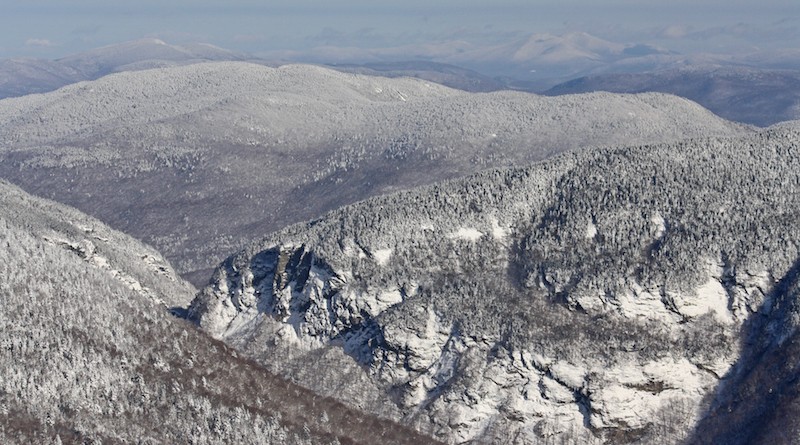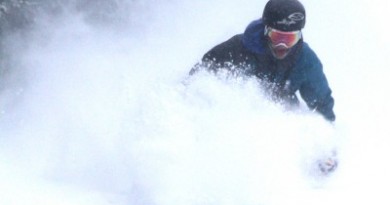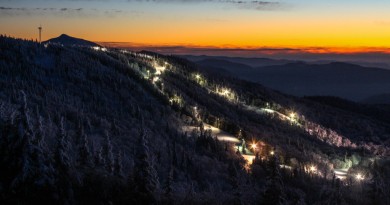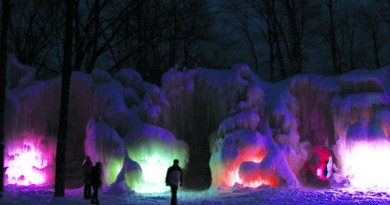Lost Overnight, Avalanches and the Wild, Wild East
Today, yet another person was rescued after getting lost and spending the night out in the mountains.
In the last week alone, Vermont State Police report, “incidents in Bolton Valley and Killington have had over 30 skiers and snowboarders requiring rescue.” And that’s not counting today’s incident at Middlebury Gap, or Wednesday’s when six soldiers were in caught in an avalanche in Easy Gully in Smuggler’s Notch, or the man who fell through the ice at Bingham Falls in Stowe the week prior.
It’s been a long two weeks for rescue teams in Vermont.
Consider the incidents:
Friday, March 2: Timothy Ferguson, 21, of Burlington was hiking near Bingham Falls when he slipped and fell through the ice. His body was not recovered until the next day by Stowe Mountain Rescue.
Friday, March 9: David Siegel, 28, of Moretown spent the night in the woods after skiing into the backcountry of Bolton and getting lost.
Wednesday, March 14: An avalanche in the Easy Gully in Smuggler’s Notch swept six U.S. Army personnel down the slope, injuring five. The six were performing winter mountain warfare training.
Friday, March 16: A hiker, Jeffrey Kramer was rescued and evacuated after being lost and spending the night on the Long Trail 1.5 miles north of Middlebury Gap.
And there have been some near misses. One man’s rescue, is another man’s near escape.
Avalanches in Vermont?
Lured by the season’s first big snowfall and warmer weather, skiers, riders and hikers have been venturing farther out into the backcountry. On Sunday, March 11, Aaron Rice and three friends set off into the sidecountry off Mt. Mansfield. After heading into a gully, they set off an avalanche that could have swept them 1,300 feet over a cliff.
“If we were out west, we would have definitely been carrying avy gear,” noted Rice, who holds the record for skiing uphill after logging 2.5 million feet in 2017 (much of it out West). “But when you’re leaving from a ski resort and taking a gondola up, you get lulled into a false sense of security.” Though Rice has carried avy gear into in Vermont before, nothing he’s seen recently made him consider it this time. “We just didn’t think,” he says.
Rice and his crew of three were lucky. “We followed protocol and skied one by one, making a cut across the top of the gully.” The first skier then launched in, setting off the slide. He managed to hold his speed and ski out to the side. “If he hadn’t, there are 100 foot cliffs below, and the snow would have swept him right over those,” said Rice. “I’ve gotten flack for talking about this from some backcountry skiers but it’s important that people know the dangers and learn from what we did.”
In 2005, another skier, Alec Stall, 23, died when an avalanche swept him over a 500-foot cliff in the Notch while filming for Meathead Films.
“Everything I know about this terrain should have told us we were in avalanche conditions but we just didn’t think about it, “ Rice admits. After skiing down, he checked that no one below had been caught in the slide and then sat down for a debrief with his group.
Earlier this winter, Rice and an experienced crew turned around after skinning for seven hours to reach a ski line in the Chic Chocs. “When none of us wanted to be the first to ski it, we knew none of us should,” said Rice. At the time they were all equipped with transponders, probes and other avalanche gear and had dug multiple pits to test the conditions.
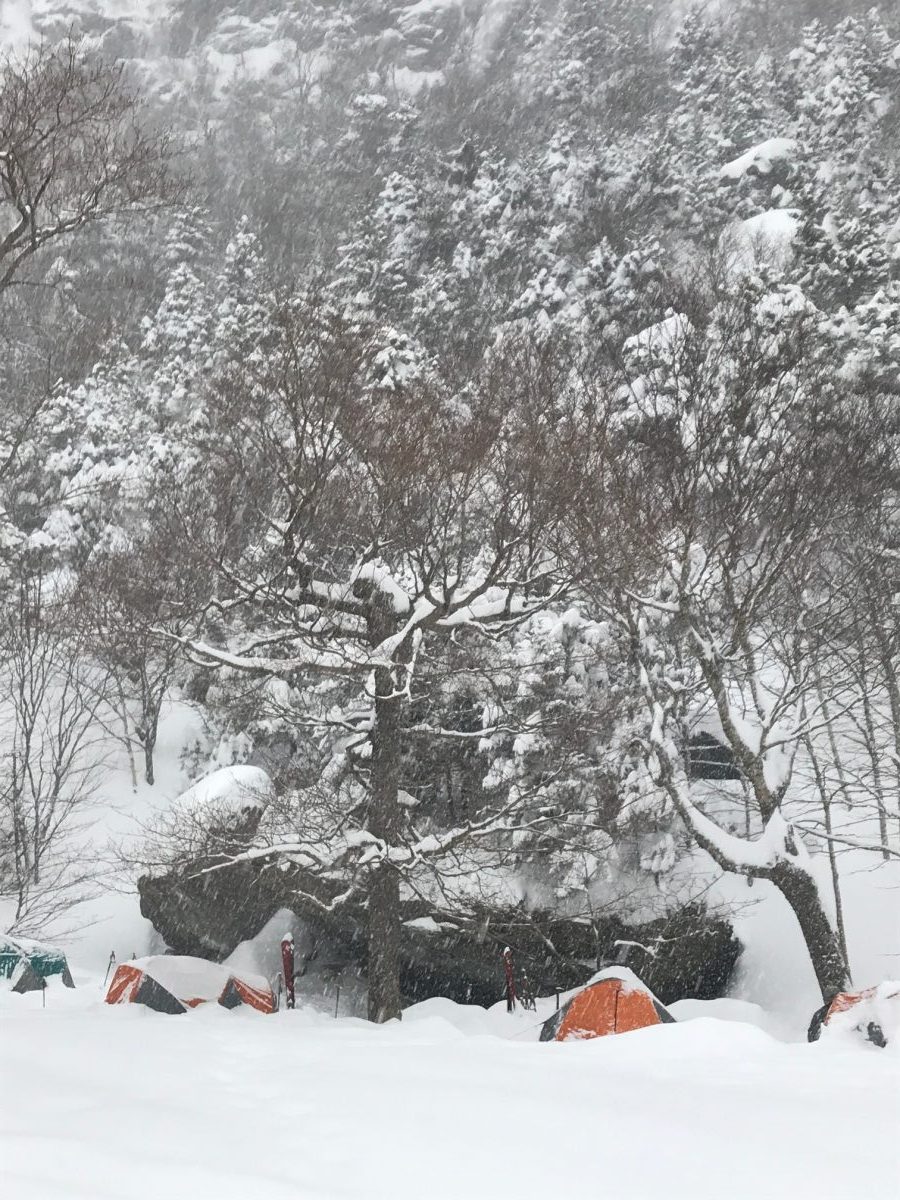
On Wednesday, March 14, Pete Davis was cross country skiing in the Notch on his commute from his home on the Jeffersonville side of the Notch to his work at Stowe Mountain Resort. “A little after 8 am, I passed six soldiers who were camped out doing winter training and talked to them briefly. Then I skied on and saw, for the first time ever, a slough of avalanche debris that had hit the road. I’ve seen debris here before, but never seen it go all the way to the road.” The night before, more than 15 inches had fallen at Stowe Mountain Resort.
Around 1 pm, the report came in that an avalanche had swept down Easy Gully, tumbling down about 900 feet and catching six U.S. Army soldiers who were training in mountain warfare with the Jericho-based National Guard. As of Thursday evening March 15, three remained hospitalized, two in good condition and one in fair condition, the National Guard reported.
Lost Overnight
Avalanches are not the only danger. With more than five feet of new snow falling in the last week, the call of fresh powder has lured skiers and riders to go deeper and deeper into the woods to find fresh tracks.
That was the case for David Siegel. The 28-year-old from Moretown set out from Bolton Valley Resort on Friday, March 9, looking to find some fresh turns. The next morning he hadn’t returned home and the police were notified.
Stowe Mountain Rescue and other rescue teams were searching the Cottonbrook area to the northeast of Bolton when they got a call he had been found. Siegel had skied off the backside of Ricker Mountain and become lost. As light faded, he managed to make a fire and build a shelter of pine branches. The next day, he managed to ski to a camp and the owner called 911.
Jeffrey Kramer was not so fortunate. The 27-year-old from Middlebury set out this past Thursday, March 14, hiking in the Ripton-Hancock area. At 2:30, Vermont State Police were alerted that he was overdue and considered a missing person. It was snowing steadily at elevation and there was 40 to 50 inches of fresh snow from the three-day storm.
Multiple rescue teams responded for an extensive overnight search, including the Ripton and Hancock Fire Departments, US Forest Service, Vermont Fish & Wildlife, Middlebury Snow Bowl Ski Patrol, Middlebury College staff, Vermont State Police New Haven & Royalton, Vermont State Police Search and Rescue, and Upper Valley Wilderness Rescue.
During the night additional information was received indicating that Kramer may have been on the Long Trail north of VT Route 125 in the town of Hancock. Search teams responded to that area and, after an all-night search, located Kramer at approximately 7:30 a.m. Friday morning, March 16. It took them until 12:30 to evacuate him by stretcher.
Kramer was taken to Porter Hospital and treated for exposure and frostbite.
What Rescuers Want You to Know
Neil Van Dyke, the former head of Stowe Mountain Rescue, took on the role of statewide Search and Rescue Coordinator after 19-year-old Levi Duclos went missing on the Emily Proctor Trail in Ripton in January, 2012. A search was not conducted until the next day. Duclos was found that morning with a broken leg and had died of hypothermia.
Since then, Van Dyke has worked with state police and rescue teams around the state to coordinate searches.
Rescue teams are now trying to raise awareness of the dangers of traveling in the mountains in cold weather. On Thursday, April 12, Van Dyke and Doug Veliko of Stowe Mountain Rescue will be participating in a discussion at the Vermont Ski and Snowboard Museum in Stowe at 6:30.
After this week’s incidents, Van Dyke and the State Police issued the following advice:
Do not leave the ski area boundary.
-Many problems are caused by people skiing or riding past signs and under barriers into remote and unpatrolled terrain, and then being unable to get back to the resort. Just because there are ski tracks heading into the woods doesn’t mean it’s OK to follow them.
Be prepared if you are venturing into the backcountry (off trail backcountry skiing is not the same as lift served in bounds resort skiing).
-Bring a pack with extra clothes, food and water.
-Don’t go into unfamiliar areas unless you have a map, compass and have a plan for your route.
-Tell somebody where you are going and when you plan on returning.
-Go early in the day while there is plenty of daylight. The last run of the day is not the time to head into the woods.
-Cell coverage can be spotty or non-existent in back country areas, so don’t plan on that as your safety net. If you do bring a phone keep it on airplane mode and store it in a pocket close to your body to keep it warm so it’s ready to go with plenty of battery life in case of an emergency.
Be aware of the weather and snow conditions.
-Plan your trips around adverse weather
In addition, Stowe Mountain Rescue posted:
” This storm has created hazardous avalanche conditions! Climbers and skiers entering the backcountry should have training and experience assessing avalanche conditions, along with ALL avalanche equipment (pack, shovel, probe, and beacon). Treat Vermont’s backcountry right now the same way you would treat the mountains out west.”
- Note: Smuggler’s Notch (shown in opening photo) is a geological formation that is outside of the ski area boundaries of both Stowe Mountain Resort and Smuggler’s Notch Resort. Photo by Scott Braaten/Stowe Mountain Resort

